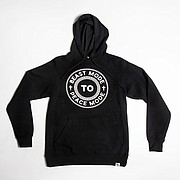DRIVING DIGITAL PRINTING
Faster and Cheaper Digital Printing Shakes Up the T-shirt Business
For many T-shirt companies, business once solely revolved around the labor-intensive job of silkscreening a graphic onto a blank tee.
But digital printers and direct-to-customer retail shook up the business for a lot of these silkscreen companies, which vary in size from the person working out of a garage to established big businesses.
These newer machines and the popularity of direct-to-consumer retail are helping a number of graphic-T-shirt companies expand beyond their traditional strengths by expanding into product fulfillment, distribution and brand consulting.
The downtown Los Angeles–headquartered Kid Dangerous brand spent $25,000 in 2010 on a Brother 381 digital printer for its own use. While learning how to use the machine, Kid Dangerous President Steve Nanino realized that his company could expand into other areas.
“As we started to get [newer] printing equipment, we realized that we could print for other companies,” Nanino said. “It was an alternative way to generate revenue.”
Kid Dangerous continues to work on its own brand, but it also does fulfillment for brands that sell their goods online. In addition, it makes special-events merchandise for retailers such as Bloomingdale’s and concert merchandise for celebrities such as Common.
Nanino got the Bloomingdale’s job done in one month, which led to the job with Common to make a 32-piece merchandise line to be sold at the musician’s performances as well as online.
Nanino estimated digital printing and associated businesses now make up 40 percent of his company’s revenues.
However, competition is growing. Amazon got in the market more than a year ago when it introduced its Merch by Amazon division. People upload artwork to Amazon and then Amazon handles production, shipping and customer service for those customers.
Entrepreneurs involved with on-demand printing predict that business will continue to grow. Kornit Digital is one of the dominant companies making digital printers that can print quickly and in small quantities. Gilad Yron, Kornit’s executive vice president of global business, estimated that digital printers this year will be used to make more than 14 billion impressions on T-shirts, hoodies, totes and signs. He forecasts that this kind of production will grow by more than 6 percent a year.
Getting cheaper
More entrepreneurs have been able to enter the direct-to-garment market because printer prices are declining, said Tim Check, product manager at Epson America. More than 10 years ago digital printers cost around $25,000 and were hard to use if the user wasn’t technically inclined.
But in the past few years the technology has become more user friendly. “We saw more people embrace the technology, and we saw more unit sales,” Check said.
The list price for a faster-printing Epson SureColor F2100 printer is $18,000.
However, the current trade war with China has increased the cost of these printers because imported printer parts from China last year were slapped with a 25 percent tariff.
Even with the price hike, these newer digital printers are predicted to take a bigger bite out of the market share occupied by the silkscreen-T-shirt business.
Customization and the ability to make small T-shirt runs is another important feature of digital printing of tees.
Downtown Los Angeles print-on-demand T-shirt company Apliiq has made appliqués for T-shirts since 2008. In 2016, Apliiq Chief Executive Officer Ian Gruber bought a Kornit brand Storm Hexa printer to start a digital division to take advantage of direct-to-consumer business.
Digital printing also opened up the possibility of doing business with brands that could not afford to place minimum orders of more than 100 units. Now you can order just one piece.
“Working with direct-to-garment printing opens up possibilities of doing business with brands that may not be able to afford minimums that conventional screenprinting bulk buys demand. For a startup brand, having to pay upfront for 100 to 300 units can be a huge obstacle to business,” Gruber said.
Gruber said his clients send their designs and orders to an Apliiq app downloaded from the company’s website, www.apliiq.com/pro. Then Apliiq fulfills the orders and distributes the goods.
Textile companies started testing digital printing more than 19 years ago, said Michael Sanders, director of digital printing and finishing technologies at Top Value Fabric, headquartered in Carson, Calif.
He became interested in digital printing when screenprinting jobs for U.S. textile companies were increasingly being sent overseas. He thought digital-printing jobs could remain in the country because they required computer-literate workers.
Both silkscreening and direct-to-garment models have their benefits. Sanders said that digital printing is much better for the environment. Workers don’t work with dyes and then look for ways to dispose of them in an environmentally responsible way.
However, the silkscreening process can produce superior images on garments, offer more colors and generally be used for jobs where large T-shirt volumes are printed.
Eric Basangan, founder of Polymer in Long Beach, Calif., said silkscreening and older forms of printing graphics on T-shirts will continue to be widely used. “Silkscreening is an art,” he said. “Silkscreening is never going to go away.”
























